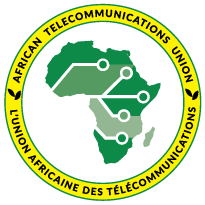As the COVID-19 pandemic continues to re-shape the environment across the globe, regulators in the continent have taken action to release spectrum to cope with the additional demand for these resources. It is on this basis and following the 1st successful African Internet Resilience webinar series on 1st June 2020 that the African Union Commission, the Internet Society, and the African Telecommunications Union, hosted the second part of the forum on 26th June 2020 attracting over 240 participants. Under the theme, ‘Shared Spectrum Strategies to Increase Affordable Access in Rural Areas,’ the engagement drew speakers from diverse backgrounds, including researchers, regulators and spectrum experts from Kenya, South Africa, Columbia and the United Kingdom.
Historically, the approach adopted for spectrum management in Africa and globally has been highly prescriptive. Regulators often decide on the user of the spectrum and the band on which to transmit. This brought out the need to think of alternative management approaches that reflect the current market evolution and technological progress.
Mr. Ntsibane Ntlapa, Impact Area Manager, Council for Scientific and Industrial Research (CSIR) in South Africa noted that South Africa has recently authorized TV White Spaces under no regulations during 2020 COVID-19 reforms. However, for long term solutions the regulator has been working closely with DSA targeting dense rural areas to tap into unused spectrum by the operators. ICASA has also published a position paper on the framework for dynamic and opportunity spectrum management. The TV White spaces GLSD put together by ICASA has been adopted by Bostwana, Cyprus, Ethiopia, Ghana, Tanzania and the United Kingdom (Certified by OFCOM) using the same calculation parameters. The regulator is also exploring the launch of the Tiered spectrum sharing model (TSSM) in IMT bands.
Mr. Leonard Mabele from Strathmore provided the example of the MoU signed between the Communications Authority of Kenya (CA) and Strathmore University in January 2019 to establish a framework of collaboration on spectrum management research. The research covers – Dynamic Spectrum Access (DSA) techniques, TV White Spaces, 5G, Software Defined Radio and Cognitive Radio techniques as well as Cybersecurity. Kenya is in the process of developing the regulatory framework which they hope to release it by August 2020.
The Director of Spectrum Insight and Analysis in OFCOM UK Ms. Siew Yoon, gave an overview of their local licensing initiative in mobile spectrum that was put in place in 2019 and which included two complimentary approaches put in place to reflect the different ways that spectrum is managed: Shared Access License which operates on a first come first serve basis and local Access License which allows any users who wants to access the spectrum to apply for band, location, bandwidth and power required.
Martha Suarez, President, Dynamic Spectrum Alliance shared a practical strategy that Columbia used and that can be adopted by African countries to facilitate internet coverage in remote areas. This tallied with the suggestion by Professor H Sama Nwana, Managing Partner Cenerva UK on the need for African Spectrum Policy to reflect the reality that most parts of Africa are rural and unconnected to electricity.
The webinar concluded with a general agreement that there is need for Africa to adopt a use it or share it licensing approach. Also agreed was that AU should help demonstrate shared spectrum as commercially viable even as Africa looks to promote innovative solutions for African problems.


